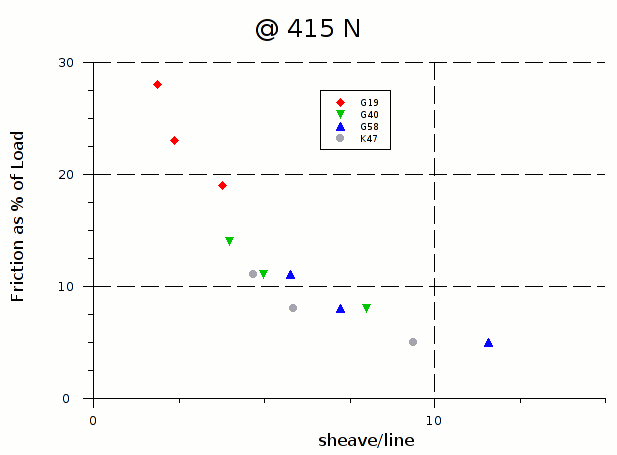Interesting. I'd really need to see more about the test setup and methodology before taking it to heart, though.
What information are you missing?
/Martin
I'd like to see a diagram of your apparatus.
What's wrong with Fig. 1 on page 1?
Details I have left out: The knot used to form the loop,
the thin line and knots used to attach the hook of the
electronic scale to the line loop and the stuff I used
to create the different loads (the 174 N load was created
using a lead-acid battery). I left these out since I could
not figure out how this information could make any difference.
What did you actually measure?
The force needed to pull the line loop through the blocks.
How did you compute friction from what you actually measured?
I have not computed the friction. The data shown in Fig. 2
on page 2 is the average of five measurements of the force
needed to pull the line loop through the blocks: raw data
with some low-pass filtering.
How did you control the line speed (I would think that friction is fairly dependent on line speed)?
I state in the last paragraph of section 2 that I had no
means of measuring the speed. The speed was low---the kind
of line speed you would use when trimming sails---and
reproducibility is down to muscular memory and the limited
possibilities to actually vary the speed by much.
I've been trying to think of how one could set up such an apparatus using a scale as the measurement device. I can imagine one way to do it, but it doesn't seem very reliable to me.
Please don't take this the wrong way. I realize this isn't a formal, published paper.
It is published if not in a peer reviewed, scientific
magazine. I have pestered some people with the manuscript
before publishing though.
I guess none of my papers in peer reviewed magazines have
ever been read by as many this soon after me writing them.
:-)
/Martin


